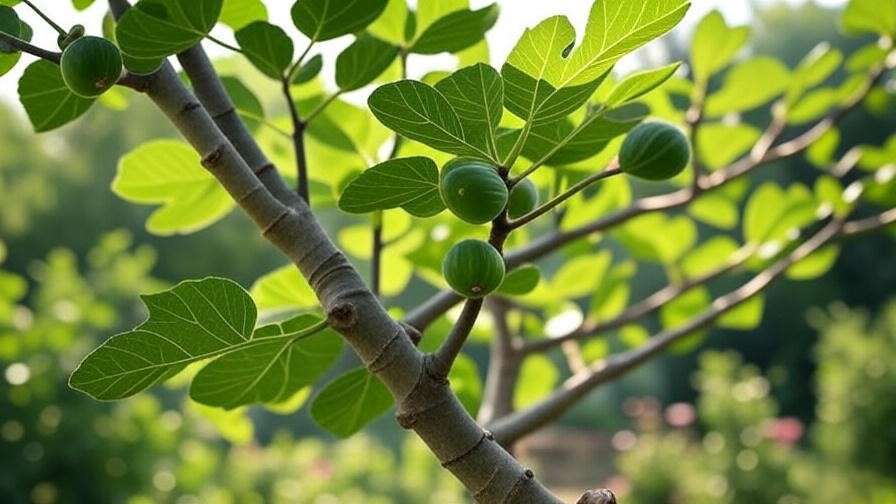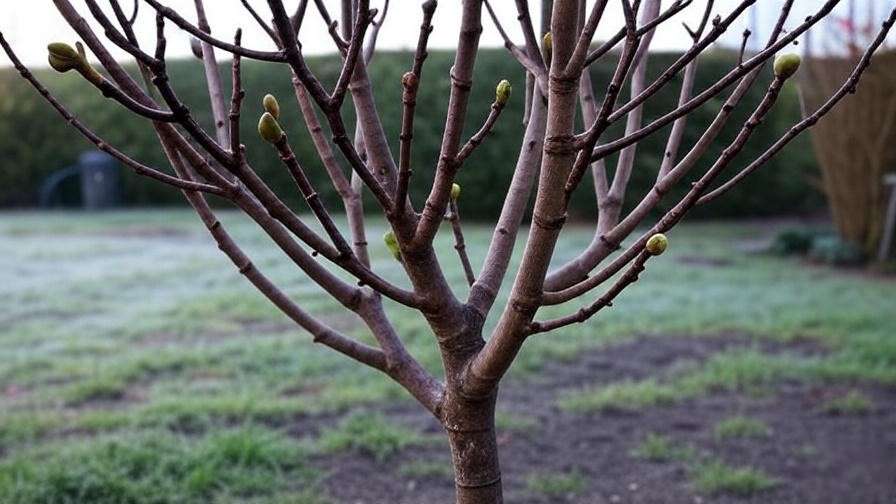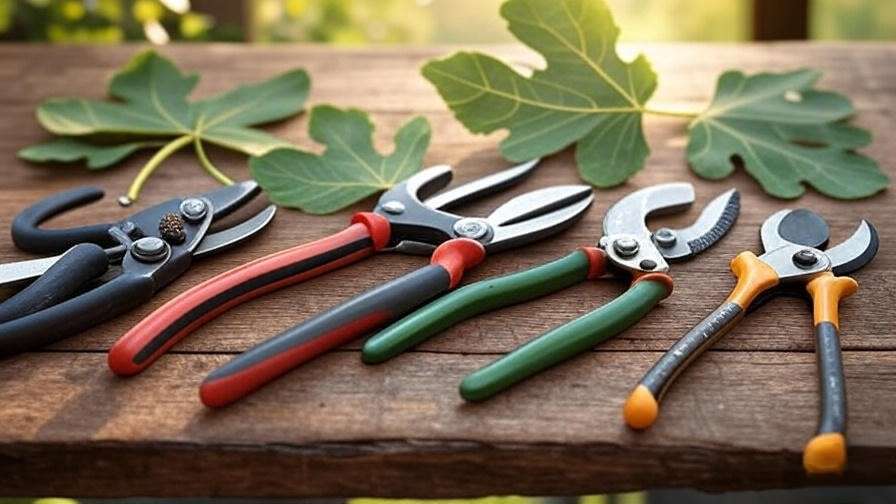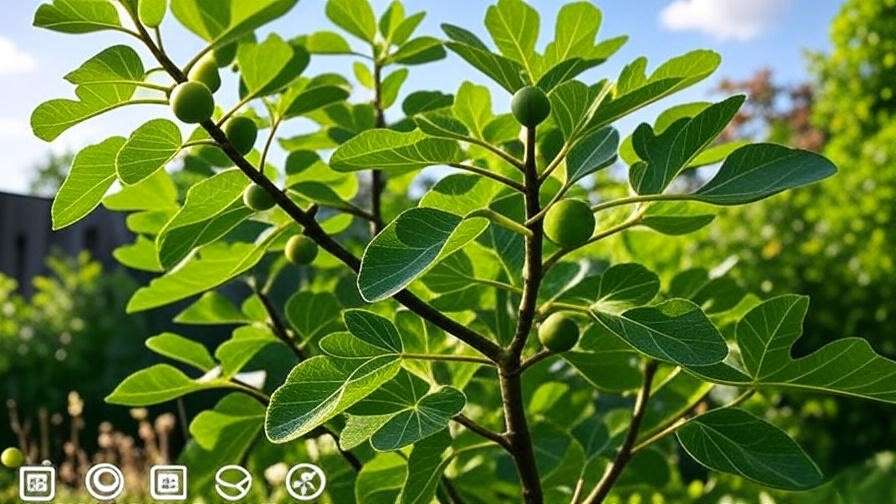Picture this: It’s a warm summer evening, and you’re savoring a sweet, juicy fig plucked straight from your own backyard tree. The secret to this bountiful harvest? Pruning fig trees for fruit. As a gardener, you know that growing healthy, productive fig trees requires more than just water and sunlight—it demands careful pruning to boost fruit yield and maintain tree vigor. Whether you’re a novice or a seasoned grower, this guide will walk you through expert techniques to prune your fig tree effectively, ensuring a thriving harvest year after year. With over 20 years of horticultural experience and insights from certified arborists, this article delivers a comprehensive, step-by-step approach to transform your fig tree into a fruit-producing powerhouse. Let’s dive in and unlock the full potential of your fig tree! 🌱
Why Pruning Fig Trees Matters for Fruit Production 🍑
Pruning isn’t just about shaping your fig tree—it’s a critical practice that directly impacts fruit quality and quantity. By removing specific branches, you encourage healthy growth, improve sunlight exposure, and reduce the risk of pests and diseases. According to a 2023 study from the University of California’s Cooperative Extension, properly pruned fig trees can increase fruit yield by up to 30% compared to unpruned trees. Let’s explore why pruning is so essential and how it sets the stage for a thriving fig harvest.

The Role of Pruning in Fig Tree Health 🌿
Pruning fig trees promotes better air circulation and sunlight penetration, both of which are vital for fruit development. An open canopy allows sunlight to reach the inner branches, stimulating photosynthesis and encouraging fruiting wood to form. Additionally, removing crowded or damaged branches reduces the risk of fungal infections, such as fig rust, which thrives in humid, shaded environments. Pruning also directs the tree’s energy toward producing larger, sweeter figs rather than excessive foliage.
For example, a well-pruned fig tree produces fruiting wood—short, sturdy branches that bear figs—while minimizing non-productive growth. This balance is key to ensuring your tree remains healthy and productive for decades.
Common Mistakes to Avoid When Pruning 🚫
While pruning is beneficial, mistakes can hinder your tree’s performance. Here are three pitfalls to steer clear of:
- Over-Pruning: Removing too many branches can stress the tree, reducing fruit production and stunting growth. Aim to remove no more than 25–30% of the canopy in a single season.
- Incorrect Timing: Pruning at the wrong time, such as during active growth or late fall, can weaken the tree or expose it to frost damage.
- Using Dull Tools: Blunt pruners or saws create jagged cuts that invite infections. Always use sharp, sanitized tools for clean, precise cuts.
By avoiding these errors, you’ll set your fig tree up for success and maximize its fruiting potential.
When to Prune Fig Trees for Optimal Fruit Yield ⏰
Timing is everything when it comes to pruning fig trees. The right season ensures your tree recovers quickly and channels energy into fruit production. Let’s break down the best times to prune and how your climate influences the schedule.

Seasonal Timing for Pruning 🗓️
- Late Winter/Early Spring (Dormant Season): The ideal time for major pruning is when the tree is dormant, typically between late February and early April in most USDA zones (6–10). During this period, the tree is less active, making it easier to shape without causing stress. Pruning in late winter also stimulates vigorous spring growth, leading to more fruiting wood.
- Summer Pruning: Light pruning in early summer (June–July) can help shape the tree, remove suckers, and improve airflow. Avoid heavy cuts during this time, as they can disrupt fruit development.
- Avoiding Fall Pruning: Pruning in late fall exposes fresh cuts to frost, which can damage the tree. In colder climates, wait until the risk of frost has passed in spring.
Regional and Climate Considerations 🌍
Your pruning schedule may vary depending on your region’s climate. In Mediterranean climates (e.g., California, parts of Australia), where figs thrive, late winter pruning aligns perfectly with the dormant season. In colder regions (e.g., USDA zones 6–7), delay pruning until early spring to avoid frost damage. For container-grown fig trees, which are common in non-ideal climates, prune lightly year-round to maintain size, focusing on major cuts in late winter.
Pro Tip: Check your local frost dates and adjust pruning to occur just before the tree breaks dormancy for optimal results.
Tools You’ll Need for Pruning Fig Trees 🛠️
Having the right tools makes pruning easier, safer, and more effective. Here’s what you need to get started, along with tips to ensure your equipment is ready for the job.

Essential Pruning Equipment 🔪
- Bypass Pruners: Perfect for small branches (up to ½ inch thick). Felco F-2 pruners are a favorite among professionals for their durability and precision.
- Loppers: Use for thicker branches (½–1.5 inches). Look for models with extendable handles for hard-to-reach areas.
- Pruning Saw: Ideal for branches over 1.5 inches. A folding saw, like the Silky Gomtaro, offers portability and clean cuts.
- Gloves: Protect your hands from thorns and rough bark with sturdy gardening gloves.
- Disinfectant: Use rubbing alcohol or a 10% bleach solution to sanitize tools between cuts.
Safety Tips for Pruning 🧤
- Wear gloves and long sleeves to avoid scratches or sap irritation.
- Sanitize tools before and after pruning to prevent the spread of diseases like fig mosaic virus.
- Use a stable ladder for taller trees to avoid falls.
Keeping your tools sharp and clean ensures precise cuts that heal quickly, reducing the risk of infection.
Step-by-Step Guide to Pruning Fig Trees for Fruit 🌱
Now, let’s get to the heart of the article: a detailed, actionable guide to pruning your fig tree for maximum fruit production. Follow these steps to transform your tree into a fruit-bearing masterpiece.
Step 1: Assess Your Fig Tree’s Structure 🔍
Before making any cuts, take a close look at your tree’s shape, size, and health. Identify the main trunk, primary branches, and fruiting wood (short, stubby branches where figs form). A healthy fig tree should have an open center or modified central leader structure, allowing sunlight to reach all parts of the canopy.
- Check for Balance: Ensure the tree isn’t leaning heavily to one side.
- Spot Weak Areas: Look for crowded branches, suckers (growth from the base), or water sprouts (vigorous vertical shoots).
- Visualize the Goal: Aim for a vase-like shape with 3–5 main branches for optimal fruiting.
Pro Tip: Sketch your tree’s structure or take photos to track changes over time.
Step 2: Remove Dead, Damaged, or Diseased Wood 🪚
Start by removing any branches that are dead, broken, or showing signs of disease (e.g., blackened or shriveled wood, spots from fig rust). Use your pruning saw or loppers for larger branches, making clean cuts at a 45-degree angle just above a healthy bud or branch collar.
- Why It Matters: Dead wood attracts pests and diverts energy from fruit production.
- How to Spot Issues: Look for brittle, discolored branches or leaves with unusual spots.
This step sets the foundation for a healthy, productive tree.
Step 3: Thin Out Crowded Areas 🌬️
Crowded branches block sunlight and trap moisture, creating a breeding ground for pests and diseases. Thin out the canopy by removing:
- Suckers: Shoots growing from the base of the tree or roots.
- Water Sprouts: Fast-growing, vertical shoots that produce little to no fruit.
- Crossing Branches: Branches that rub against each other, causing wounds.
Cut these back to the main branch or trunk, leaving no stubs. Aim to open up the canopy so air and light can penetrate easily.
Step 4: Shape for Fruit Production ✂️
To maximize fruit yield, focus on encouraging fruiting wood and maintaining an open structure.
- Encourage Lateral Branches: Figs form on new growth from the previous season. Make heading cuts (cutting back the tip of a branch) to stimulate lateral shoots.
- Maintain an Open Canopy: Remove inward-growing branches to keep the center of the tree open.
- Balance the Tree: Ensure no single branch dominates, which could reduce fruiting on weaker branches.
For example, if a branch is growing too long and shading others, cut it back by one-third to redirect energy to fruiting wood.
Step 5: Control Tree Size 📏
Fig trees can grow large (15–30 feet tall), but smaller trees are easier to manage and harvest. For backyard or container trees, keep the height and spread in check:
- Cut Back Leaders: Trim the main vertical branches to maintain a height of 6–10 feet.
- Thin Side Branches: Reduce the length of lateral branches to keep the tree compact.
- Container Trees: Prune more aggressively to fit the pot size, focusing on maintaining a balanced shape.
A compact tree not only produces more accessible fruit but also fits small gardens or patios.
Step 6: Post-Pruning Care 🌞
After pruning, give your fig tree the care it needs to recover and thrive:
- Water Deeply: Provide a thorough watering to reduce stress and support new growth.
- Mulch: Apply a 2–3 inch layer of organic mulch (e.g., wood chips) around the base to retain moisture and suppress weeds.
- Fertilize: Use a balanced fertilizer (e.g., 10-10-10) or compost to replenish nutrients, but avoid over-fertilizing, which can lead to excessive leaf growth.
- Monitor for Stress: Check for signs of wilting or pest activity in the weeks following pruning.
Proper aftercare ensures your tree bounces back quickly and focuses energy on fruit production.
Expert Tips for Maximizing Fig Fruit Yield 🌟
To take your fig tree pruning to the next level, incorporate these expert strategies, honed by years of experience from horticulturists and home gardeners alike. These tips will help you fine-tune your approach and ensure a bountiful harvest.
- Pinching Back New Growth: In early summer, pinch back the tips of new shoots to encourage the formation of fruiting spurs. This technique promotes shorter, sturdier branches that are more likely to bear figs. For example, pinch back about ½ inch of new growth on vigorous shoots to redirect energy to fruit production.
- Training Young Fig Trees: For newly planted or young fig trees (1–3 years old), focus on establishing a strong framework. Select 3–5 main branches to form an open, vase-like structure, and remove any competing leaders. This early training sets the stage for long-term productivity.
- Variety-Specific Pruning: Different fig varieties have unique growth habits. For instance, Brown Turkey figs tend to produce fruit on new growth, so light annual pruning is sufficient. Black Mission figs, however, may require more aggressive thinning to prevent overcrowding. Research your variety (e.g., Celeste, Kadota) to tailor your pruning approach.
- Organic Pest Control: Pruning opens up the tree, making it less hospitable to pests like fig beetles or aphids. Pair pruning with companion planting (e.g., marigolds to deter pests) or use organic neem oil sprays to protect fresh cuts from infestations.

These expert tips, combined with the step-by-step guide, will help you achieve a healthier tree and a more abundant harvest.
Common Fig Tree Pruning Challenges and Solutions 🛡️
Even with the best intentions, pruning fig trees can present challenges. Here’s how to troubleshoot common issues to keep your tree thriving.
Problem: Low Fruit Production 😞
Possible Causes:
- Over-Pruning: Removing too much fruiting wood can reduce yields.
- Poor Timing: Pruning during active growth diverts energy from fruit development.
- Nutrient Deficiencies: Lack of key nutrients like potassium or phosphorus can limit fruiting.
Solutions:
- Stick to removing no more than 25–30% of the canopy per season to preserve fruiting wood.
- Prune during the dormant season (late winter/early spring) to align with the tree’s natural cycle.
- Test your soil and apply a balanced fertilizer or compost to address deficiencies. For example, a soil test kit from your local garden center can reveal nutrient imbalances.
Problem: Excessive Vegetative Growth 🌿
Possible Causes:
- Too Much Nitrogen: High-nitrogen fertilizers promote leafy growth at the expense of fruit.
- Insufficient Thinning: Overcrowded branches lead to vigorous, non-fruiting shoots.
Solutions:
- Switch to a low-nitrogen fertilizer (e.g., 5-10-10) to prioritize fruit development.
- Thin out water sprouts and suckers regularly to redirect energy to fruiting branches.
- Example: If your tree is producing dense foliage but few figs, reduce nitrogen applications and thin out 10–15% of the canopy to improve light penetration.

Problem: Pest or Disease After Pruning 🐛
Possible Causes:
- Unclean Tools: Dirty pruners can introduce pathogens like fig mosaic virus.
- Open Wounds: Fresh cuts attract pests or fungal infections if not properly managed.
Solutions:
- Sanitize tools with a 10% bleach solution or rubbing alcohol before and after each cut.
- Monitor for symptoms like yellowing leaves (fig mosaic virus) or root rot (soggy soil).
- Apply organic treatments, such as copper-based fungicides, to prevent fungal issues post-pruning.
- Case Study: A gardener in California noticed leaf spotting after pruning their Black Mission fig tree. By sanitizing tools and applying neem oil, they reduced pest damage and restored tree health within one season.
Addressing these challenges proactively ensures your fig tree remains productive and resilient.
FAQs About Pruning Fig Trees ❓
Here are answers to the most common questions gardeners have about pruning fig trees, designed to clarify doubts and provide actionable insights.
Q: How much can I prune my fig tree without harming it?
A: Remove no more than 25–30% of the canopy in a single season to avoid stressing the tree. Focus on dead, damaged, or crowded branches to maintain balance.
Q: Can I prune a fig tree in summer?
A: Yes, but keep summer pruning light. Remove suckers, water sprouts, or small overcrowded branches to improve airflow without disrupting fruit development.
Q: What’s the best way to prune a young fig tree for fruit?
A: For trees under 3 years old, select 3–5 main branches to form an open structure. Remove competing leaders and suckers to encourage a strong framework for future fruiting.
Q: How do I know if I’ve over-pruned my tree?
A: Signs include stunted growth, fewer leaves, or reduced fruit yield. If you suspect over-pruning, avoid further cuts for a season and focus on proper watering and fertilization to aid recovery.
Q: Do container-grown fig trees need different pruning techniques?
A: Yes, container figs require more frequent pruning to control size. Focus on maintaining a compact shape, removing excess growth, and ensuring the tree fits the pot’s constraints.
Q: How can I prevent disease after pruning?
A: Sanitize tools between cuts, prune during dry weather to minimize fungal spread, and monitor for signs of disease like leaf spots or wilting.
Q: Should I prune differently for breba figs vs. main crop figs?
A: Breba figs (early season) grow on last year’s wood, so avoid heavy pruning of older branches in late winter. Main crop figs form on new growth, so light summer pinching can boost their production.
These FAQs address the practical concerns of gardeners, making the article a go-to resource for pruning fig trees.
Conclusion: Grow Your Best Fig Harvest Yet! 🍇
Pruning fig trees for fruit is a game-changer for any gardener looking to maximize their harvest. By following this step-by-step guide, avoiding common mistakes, and applying expert tips, you can transform your fig tree into a productive, healthy centerpiece of your garden. Whether you’re growing Brown Turkey, Black Mission, or another variety, proper pruning ensures larger, sweeter figs and a thriving tree for years to come.
Ready to get started? Grab your pruners, follow these techniques, and watch your fig tree flourish. Share your pruning success stories or questions in the comments below, and explore our related articles on fig tree care, soil health, and organic pest control for even more tips! 🌱













